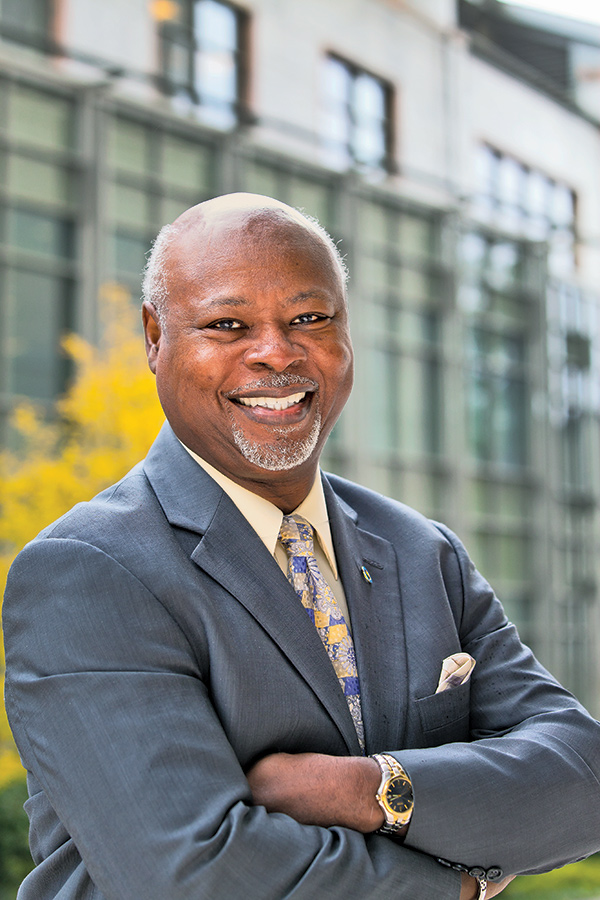To Emory, Away, and Back Again
when James Gavin 70PhD reconnected with the university, he was inspired by its progress

Kay Hinton
Jim Gavin 70PhD’s mother was a chef at one of the best restaurants in Mobile, Alabama, in the 1950s, but segregation prevented his family from dining there. Gavin grew up to be a civil rights activist and, while studying for a doctorate in biochemistry at Emory, decided to become a leader in higher education.
Now an Emory medical professor and a member of the university’s Board of Trustees, he has made a bequest to support the James T. Laney School of Graduate Studies. His gift honors the Emory president emeritus for whom the school is named and celebrates the leadership of Dean Lisa Tedesco.
“I love the energy and vision she’s brought to the graduate school and the very notion of giving the school an identity built on the ethos of Jim Laney. I want to be known as a member of this team,” says Gavin, also former president of Morehouse School of Medicine.
Laney served as Emory’s president from 1977 until 1993, a time of unprecedented growth for the university. With the help of the $105 million Woodruff gift in 1979, he focused on strengthening the faculty, attracting distinguished scholars, and expanding graduate education in distinction and breadth, among other priorities. The graduate school was named in his honor in 2009.
Gavin’s bequest will support the James T. Laney Fellowship Endowment for Biological, Biomedical and Health Sciences. Established during Campaign Emory to build on Laney’s legacy for graduate education at Emory, the endowment will help recruit graduate students in areas such as cell biology, cancer biology, genetics, and neuroscience.
A second endowment, the James T. Laney Fellowship Endowment for Arts and Sciences, will attract graduate students to advance research and strengthen teaching in the humanities and social sciences.
The Laney funds, Tedesco says, will help the school maintain its responsibility “to be the research engine for advancing discovery, understanding, technology, and the economy. We take that responsibility seriously and want to make sure that we hold it in trust for the future.”
Gavin is an expert in diabetes and childhood obesity who chairs the board of directors for the Partnership for a Healthier America, which is instrumental in First Lady Michelle Obama’s campaign against childhood obesity. He enrolled in Emory’s graduate school on the advice of a professor at Livingstone College in North Carolina, where he earned his bachelor’s degree in chemistry.
“The academic experience at Emory was fantastic,” he says. “It was a strong program, an intimate program. We had much contact with our professors.”
For Gavin, one of two African American students in the basic health sciences doctoral program, the close environment also presented unwelcome complications. As was true of many young students in the 1960s nationwide, he encountered racism on campus, which added a layer of frustration to the stress of a rigorous academic path.
He lost touch with Emory for many years after graduation, reconnecting through his position with the Howard Hughes Medical Institute. As a senior scientific officer of the large grant-making organization, he had administrative oversight of fifteen academic institutions nationwide, including Emory.
As he renewed his relationship, he discovered that the university had been working in his absence to build a diverse community of top-tier scholars, with recognition that true academic excellence comes from a variety of ideas and approaches.
“I’ve never seen an institution redefine itself so completely in terms of providing all students—no matter what stripe—with the opportunity to succeed. I’ve watched Emory take this on with a vengeance,” he says.




